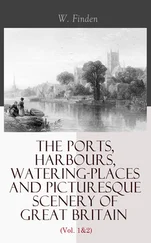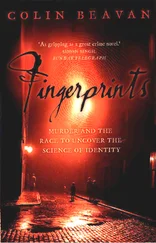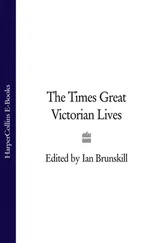Nineteenth-century physicians who specialised in mental illness, known as mad-doctors or alienists, believed that most madness was hereditary: the mother was the strongest source, and the daughter the most likely recipient. The first Mrs Kent was said to have undergone a bout of insanity while pregnant with Constance, and a child born in such circumstances was thought all the more liable to go mad herself: in 1881 George Henry Savage wrote that two babies he encountered at Bethlehem asylum 'were saturated with insanity while still in the womb . . . these infants seemed to be perfect little devils from birth'. Another theory - psychological rather than physiological - was that brooding on one's hereditary taint of madness could itself bring it on (this idea drove the plot of Wilkie Collins' 'Mad Monkton', a short story of 1852). The result was the same. Parsons told Whicher that he 'would not sleep in a house where Miss Constance was without having his door secured'.
There was a danger that Parsons' allegations about Constance would rebound on him. In the late 1850s several medical men were found to have consigned sane women to asylums - the ease of getting a doctor to testify to a woman's madness had become a national scandal. A parliamentary select committee investigated the phenomenon in 1858, and The Woman in White was dramatising it in 1860. The public was familiar, now, with the figure of the physician who falsely declared a woman insane.
Back in Road, Whicher put the breast flannel on display in the Temperance Hall and invited the villagers to identify it. This flannel, said the reporter for the Somerset and Wilts Journal , must have been used to administer chloroform to Saville or to stifle his screams; the only other explanation for its presence in the privy, he wrote, was that it was 'accidentally dropped from the murderer while bending over to accomplish the bloody work, which would appear to indicate a person in a state of comparative nudity'. From the fact of the flannel, the reporter conjured up the image of an almost naked woman stabbing the boy in the privy. He had become so infected with the search for significance that he had forgotten a fourth possibility: the flannel might have nothing to do with the murder at all.
Whicher pointed out in his report that the privy was used by all the servants of Road Hill House, and by visiting tradesmen and women. The flannel had not been found with the body, but on the 'soft soil' in the cesspool beneath it. The detective observed that 'it is quite possible it was down the privy before the murder, and if the person it belongs to has been shewn it since they may from fear of being suspected deny any knowledge of it'.* It took a cool head to accept that an apparently banal object was, sometimes, truly banal, and that people might lie not because they were guilty, but because they were scared. Whicher identified one further possibility: perhaps the murderer had dropped the flannel in the privy to trick the police: 'It may have been put there by design,' he noted, 'to throw suspicion on an innocent person.'
The breast flannel was one of several loose ends in the case that the investigators - police, reporters, newspaper readers - tried to endow with meaning, to turn into a clue. While a murder went unsolved, everything was potentially significant, packed with secrets. The observers, like paranoiacs, saw messages everywhere. Objects could regain their innocence only when the killer was caught.
Since Whicher was sure that the murderer was an inmate of the house, all his suspects were still at the scene. This was the original country-house murder mystery, a case in which the investigator had to find not a person but a person's hidden self. It was pure whodunnit, a contest of intelligence and nerve between the detective and the killer. Here were the twelve. One was the victim. Which was the traitor?
To get at the inner thoughts and feelings of the Kent house-hold was more a matter of instinct than logic, what Charlotte Brontee described as 'sensitiveness - that peculiar, apprehensive, detective faculty'. A vocabulary was emerging to capture the elusive new detective methods. In 1849 the word 'hunch' was first used to mean a push or nudge towards a solution. In the 1850s 'lead' gained the meaning of a guiding indication or a clue.
Whicher observed the inhabitants of Road Hill House, their tics and intonations, the unconscious movements of their bodies and faces. He deduced their characters from their behaviour. In his own phrase, he 'reckoned 'em up'. An unnamed detective tried to explain this process to the journalist Andrew Wynter by describing how he caught a swell mobsman at a ceremony in Berkshire in 1856, when the Queen was laying the foundation stone of Wellington College, near Crowthorne. 'If you ask me to give my reason why I thought this person a thief the moment I saw him, I could not tell you,' said the detective. 'I did not even know myself. There was something about him, as about all swell mobsmen, that immediately attracted my attention, and led me to bend my eye upon them [sic]. He did not appear to notice my watching him, but passed into the thick of the crowd, but then he turned and looked towards the spot in which I was - this was enough for me, although I had never seen him before, and he had not to my knowledge attempted any pocket. I immediately made my way towards him, and tapping him on the shoulder, asked him abruptly, "What do you do here?" Without any hesitation, he said in an under tone, "I should not have come if I had known I should have seen any of you." I then asked him if he was working with any companions, and he said, "No, upon my word, I am alone;" upon this I took him off to the room which we had provided for the safe keeping of the swell mobsmen.' The detective's boldness, his instinct for a person being 'wrong', his familiarity with the swell mob and the plain, dramatic manner in which he told his story, suggest that Wynter's informant was Whicher. And there were telltale tics in his language: Whicher used the phrase 'That was enough for me' in a conversation recorded by Dickens.
It was hard to communicate in words the sorts of subtle movements on which a detective based his hunches: the momentary grimace, the fleeting gesture. The Edinburgh detective inspector James McLevy made a good go of it in the memoirs he published in 1861. As he watched a servant girl at a window, 'I could even notice the eye, nervous and snatchy, and the secret-like movement of withdrawing the head as she saw the man, and then protruding it a bit when she saw him busy.' The journalist William Russell, in one of the detective stories he published as 'Waters' in the 1850s, tried to capture the complexities of looking: 'her glare, for such it was, continuing fixed upon me - yet an introspective glare - searching the records of her own brain as well as the tablet of my face - considering, comparing both'. This formulation caught the way the accomplished detective worked: he looked keenly out at the world and, simultaneously, as sharply inwards, searching the records of his memory. The eyes of others were the books to be read, his own experience the dictionary that enabled him to read.
Whicher claimed he could see people's thoughts in their eyes. 'The eye,' he told William Wills, 'is the great detector. We can tell in a crowd what a swell-mobsman is about by the expression of his eye.' Whicher's experience 'guided him into tracks quite invisible to other eyes', wrote Wills. In faces, said McLevy, 'you can always find something readable . . . I am seldom out when I get my eyes on them.'
Whicher read bodies as well as faces - a twitch, a start, a rustle of hands beneath a cape, a sharp nod to an accomplice, a dart into an alley. He once arrested two well-dressed young men who had been loitering outside the Adelphi and Lyceum theatres because he 'suspected their movements' (when he searched them, he discovered that they did not have the money to pay for even the cheapest tickets in the pit, which confirmed his guess that they had been planning to pick pockets). His eye for the suspect movement had found him the diamonds stolen by Emily Lawrence and Louisa Moutot.
Читать дальше












